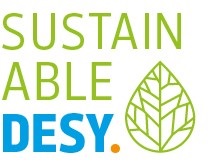Critical Materials and Life Cycle Management: The Example of Rare Earths – curse or blessing?
→
Europe/Berlin
Flash Conference Room (Hamburg)
Flash Conference Room
Hamburg
DESY
Description
Life Cycle Assessments get more and more in the focus in industry and also in science. iFAST presents a platform for discussing and finding solutions in these topics.
In our workshop we want to focus on the Life Cycle Management using the
example of Rare Earths Elements (REE), the key material in permanent magnets used in a variety of fields like accelerator, turbines, hard drives and many more.
On the workshop we will discuss the following points:
- Life cycle management
Consider entire life cycle of technical component using critical materials:
construction – operation – deconstruction - Mining and processing of REE
a socio-ecological approach – energy savings versus destructive mining and processing - Using permanent magnets
Examples of the use of permanent magnets and its Pro and Con - Certification for mining and processing of REE
How to force more sustainable thinking in the production of REE - Recycling of permanent magnets
New processes for the re-use and recycling of permanent magnets - Alternatives for permanent magnets with REE
New magnetic materials as well as improved electromagnets
Science, industry, politics and NGO in cooperation can forces to tackle the problem – we can develop solutions together.


This project has received funding from the European Union’s Horizon 2020 research
and innovation programme under grant agreement No 101004730”.
